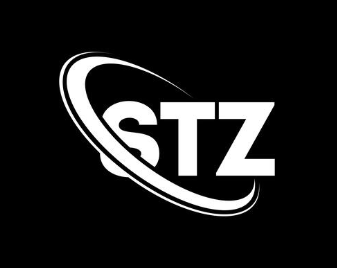In an era where rapid change defines success, staying competitive and achieving sustainable growth require more than short-term tactics or trendy solutions. The I N C R E A framework has emerged as a transformative approach, gaining traction across business, education, technology and personal development for its inclusive and integrative method of fostering progress. But what is I N C R E A and why is it reshaping how organizations and individuals approach growth? This article explores the framework’s core components, its applications and practical strategies for implementation, offering insights backed by real-world examples.
What is the I N C R E A Framework?
I N C R E A stands for Innovation, Nurturing, Creativity, Research, Efficiency,and Advancement. It is a holistic model designed to drive continuous improvement by integrating these six interconnected pillars. Unlike rigid, prescriptive methodologies, I N C R E A emphasizes adaptability, encouraging users to align their efforts with their unique goals while fostering sustainable progress. Its flexibility makes it applicable across diverse contexts, from corporate boardrooms to classrooms and personal growth journeys.
The framework’s strength lies in its balance of forward-thinking innovation and practical efficiency, grounded in research and creativity. It challenges users to reflect intentionally, prioritize meaningful outcomes, and adapt to evolving demands. By weaving together these elements, I N C R E A creates a roadmap for purposeful, long-term success.
Core Components of I N C R E A
Each pillar of I N C R E A plays a distinct yet complementary role in driving growth. Below, we break down the framework’s components and their significance:
- Innovation: The spark of new ideas, processes, or products that disrupt the status quo. Innovation pushes boundaries, encouraging organizations and individuals to explore uncharted possibilities. For example, a tech startup might develop a novel app to address a market gap, while an individual might adopt innovative time-management techniques to boost productivity.
- Nurturing: Fostering an environment that supports growth and collaboration. Nurturing emphasizes empathy, mentorshi and community-building, ensuring that ideas and people thrive. In education, this might involve creating inclusive classrooms where students feel valued and motivated.
- Creativity: The ability to think outside conventional frameworks and devise unique solutions. Creativity fuels differentiation, whether through standout branding in business or imaginative projects in education. A creative marketing campaign, for instance, can captivate audiences and set a company apart.
- Research: The foundation of informed decision-making. Research involves gathering data, analyzing trends, and understanding needs to guide actions. In business, market research can reveal customer preferences, while in personal development, studying effective habits can inform goal-setting.
- Efficiency: Streamlining processes to maximize resources and minimize waste. Efficiency ensures that efforts are sustainable and scalable. For example, a manufacturing firm might adopt lean production techniques, while an individual could optimize daily routines to balance work and life.
- Advancement: The pursuit of continuous improvement and alignment with future trends. Advancement keeps strategies relevant, whether by adopting emerging technologies in business or upskilling in personal development to stay competitive.
These pillars are not isolated; they interact dynamically, creating a cycle of growth where each element reinforces the others. For instance, research informs innovation, which is nurtured through collaboration and executed with efficiency, leading to advancement.
Applications of I N C R E A Across Domains
Business
In the corporate world, I N C R E A drives competitive advantage by fostering a culture of continuous improvement. Companies form cross-functional teams to innovate collaboratively, using research to identify market trends and customer needs. For example, a retail chain might use data analytics (Research) to develop a personalized shopping app (Innovation), supported by creative marketing (Creativity) and streamlined operations (Efficiency). Nurturing a positive workplace culture ensures employee engagement, while advancement keeps the company ahead of industry shifts. A real-world example is Amazon, which integrates customer-driven innovation with efficient logistics to maintain market leadership.
Education
Educators leverage I N C R E A to create dynamic learning environments. Interactive technologies, such as virtual reality labs, embody Innovation, while project-based learning fosters Creativity. Research informs curriculum design, ensuring relevance to student needs, and Nurturing creates supportive classrooms. Efficiency is achieved through adaptive platforms that personalize learning, and Advancement ensures curricula evolve with technological trends. For instance, Finland’s education system uses research-driven, student-centered approaches to nurture creativity and achieve high learning outcomes.
Technology
In tech, I N C R E A fuels breakthroughs by embedding innovation in development cycles. Developers use research to identify user needs, create efficient code, and advance products through iterative updates. Nurturing collaborative teams and fostering creative problem-solving lead to standout solutions. For example, open-source platforms like TensorFlow rely on community-driven innovation and research to advance AI capabilities, demonstrating I N C R E A’s impact in tech.
Personal Development
Individuals apply I N C R E A to achieve personal excellence Innovation in career planning opens new opportunities while research into self-improvement techniques enhances skills. Creativity transforms daily routines, efficiency improves time management, and nurturing supportive networks fosters motivation. Advancement ensures lifelong learning, as seen in professionals who upskill through online courses to stay relevant in fast-changing industries.
Practical Strategies for Implementing I N C R E A
To harness I N C R E A’s potential, consider these actionable steps:
- Map Existing Efforts: Assess current workflows, programs, or personal goals against the six pillars. Identify gaps, such as a lack of research or insufficient nurturing, to prioritize improvements.
- Set Intentional Goals: Define what matters most—whether it’s launching a new product, enhancing student engagement, or achieving personal milestones. Use I N C R E A to align actions with these priorities.
- Foster Collaboration: Build cross-functional teams in business or study groups in education to nurture ideas and encourage creative input. For personal development, join communities that support growth.
- Leverage Data: Use research to inform decisions. Businesses can analyze market trends, educators can study learning outcomes, and individuals can track progress with tools like habit trackers.
- Iterate and Adapt: Embrace advancement by regularly reviewing and refining strategies. In technology, this might mean updating software based on user feedback; in personal development, it could involve adjusting goals as circumstances change.
- Balance Efficiency and Creativity: Streamline processes without stifling innovation. For example, a company might automate routine tasks to free up time for creative brainstorming.
Challenges and Solutions
Implementing I N C R E A can face obstacles, such as resistance to innovation or creative blocks. To overcome these:
- Resistance to Change: Educate stakeholders on the benefits of innovation, using data to demonstrate impact.
- Creative Blocks: Create environments that encourage experimentation, such as brainstorming sessions or maker spaces.
- Insufficient Research: Invest in accessible tools, like online databases or analytics platforms, to support informed decisions.
- Efficiency Trade-offs: Balance optimization with flexibility to avoid rigid processes that hinder adaptability.
- Advancement Fatigue: Pace changes to prevent burnout, ensuring stakeholders are engaged through nurturing and clear communication.
Real-World Impact
The I N C R E A framework’s effectiveness is evident in its outcomes. In business, companies using integrative approaches report 15-20% higher growth rates than less adaptive competitors, according to industry studies. In education, schools adopting flexible, research-driven curricula see up to 30% improvement in student engagement. In personal development, individuals using structured frameworks for growth report higher satisfaction and productivity. These results underscore I N C R E A’s ability to drive meaningful change.
Conclusion
The I N C R E A framework offers a powerful, adaptable approach to achieving sustainable growth in a fast-changing world. By integrating Innovation, Nurturing, Creativity, Research, Efficiency, and Advancement, it empowers organizations, educators, technologists, and individuals to align their efforts with purpose and progress. To begin, map your current strategies to I N C R E A’s pillars, set intentional goals, and embrace iterative improvement. Whether you’re leading a company, teaching a class, or pursuing personal excellence, I N C R E A provides a blueprint for lasting success.








